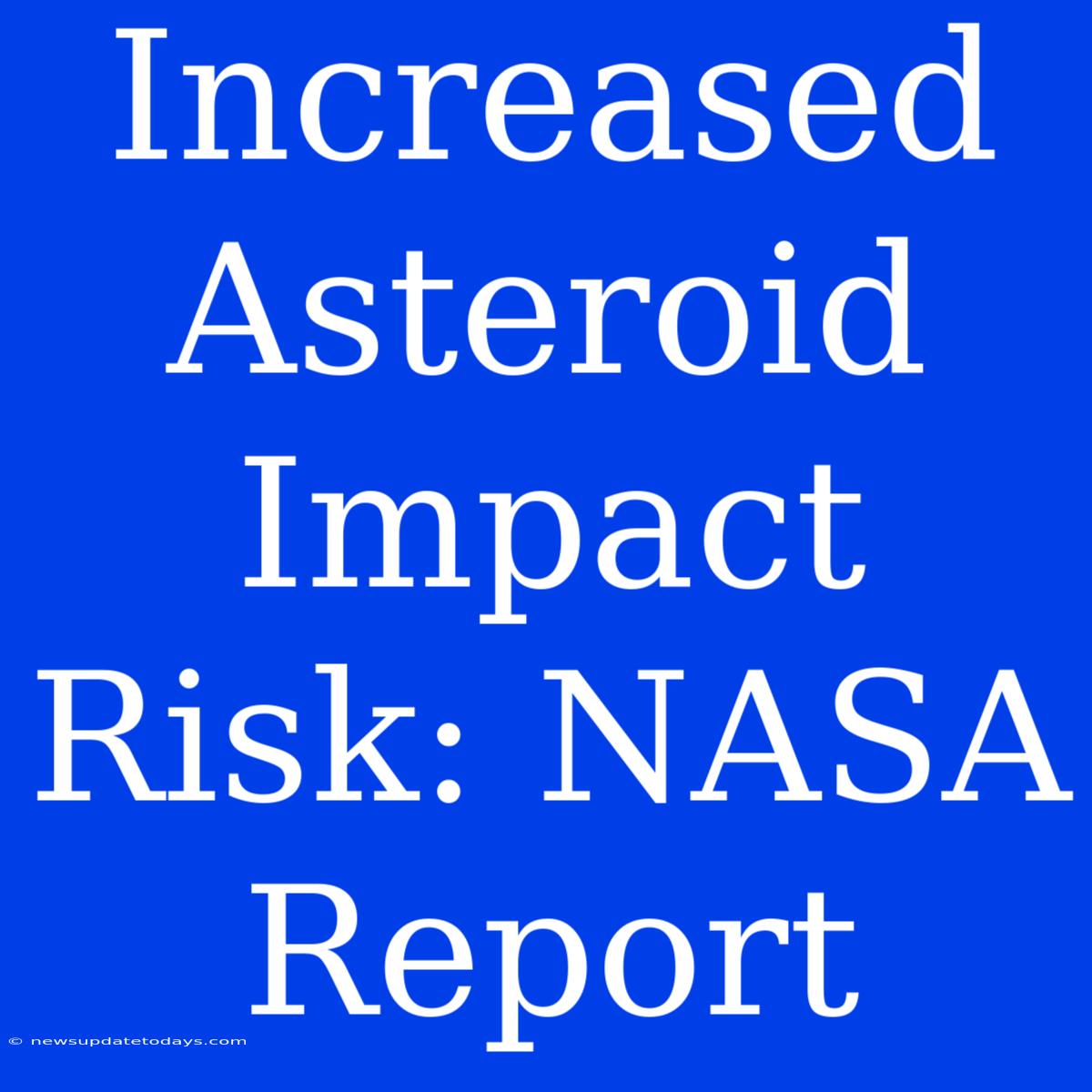Increased Asteroid Impact Risk: A NASA Report Reveals New Concerns
NASA's recent report on asteroid impact risk has sent ripples of concern through the scientific community and beyond. The findings highlight a potentially increased chance of a significant asteroid collision with Earth, prompting renewed focus on planetary defense strategies. This article delves into the key takeaways from the report, exploring the implications and the ongoing efforts to mitigate this potential threat.
Understanding the Increased Risk
While the overall probability of a devastating asteroid impact remains low, the report suggests a refinement in the assessment of near-Earth objects (NEOs). Improved detection technologies and sophisticated modeling techniques have allowed scientists to better characterize the size, trajectory, and potential impact energies of asteroids previously identified as potentially hazardous. This enhanced understanding, while not necessarily indicating a dramatic increase in the number of dangerous asteroids, does lead to a more nuanced and potentially higher estimate of the risk.
Key Findings of the NASA Report
The report's specifics are complex, but some key findings warrant attention:
- Improved NEO Detection: Advances in telescope technology and data analysis have led to the discovery of a significant number of previously unknown NEOs. This increase in detected objects allows for a more accurate calculation of the overall risk.
- Refined Trajectory Predictions: More precise calculations of asteroid trajectories, taking into account various gravitational influences and the Yarkovsky effect (a subtle but important force caused by thermal radiation), provide a more accurate prediction of future close approaches and potential impact scenarios.
- Emphasis on Smaller Asteroids: The report also highlights the potential danger of smaller asteroids, those less than one kilometer in diameter. While less likely to cause global extinction, these smaller asteroids can still cause significant regional devastation. The sheer number of these smaller asteroids makes their collective impact risk more significant than previously thought.
What Does This Mean for Planetary Defense?
The report’s findings underscore the importance of continued investment in planetary defense initiatives. These efforts include:
- Enhanced NEO Detection Systems: The need for even more powerful and sensitive telescopes dedicated to NEO detection is paramount. Early detection is crucial for effective mitigation strategies.
- Improved Trajectory Modeling: Further refinements in computational modeling are needed to accurately predict the future trajectories of NEOs, considering all relevant factors.
- Development of Mitigation Techniques: Research and development of various asteroid deflection techniques, such as kinetic impactors and gravity tractors, must continue to ensure we have the capability to deflect a threatening asteroid should the need arise.
Conclusion: Vigilance and Preparedness
The increased asteroid impact risk highlighted by NASA's report isn't a cause for immediate panic, but it is a call to action. The report serves as a stark reminder of the potential dangers posed by NEOs and the need for ongoing vigilance and proactive measures to safeguard our planet. Continued investment in research, technology, and international collaboration is vital to ensure we are well-prepared for any future threats. The future of planetary defense relies on our commitment to scientific advancement and global cooperation.

